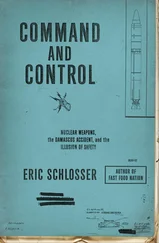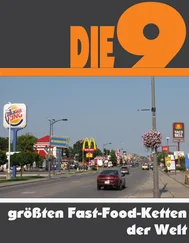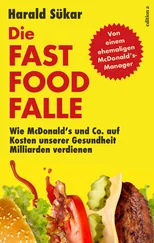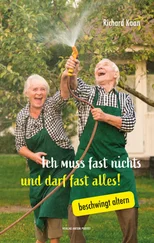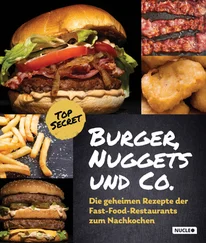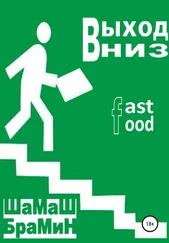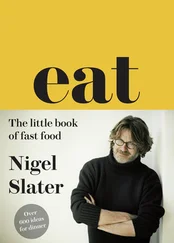The McDonalds fired all their carhops in 1948, closed their restaurant, installed larger grills, and reopened three months later with a radically new method of preparing food. It was designed to increase the speed, lower prices, and raise the volume of sales. The brothers eliminated almost two-thirds of the items on their old menu. They got rid of everything that had to be eaten with a knife, spoon, or fork. The only sandwiches now sold were hamburgers or cheeseburgers. The brothers got rid of their dishes and glassware, replacing them with paper cups, paper bags, and paper plates. They divided the food preparation into separate tasks performed by different workers. To fill a typical order, one person grilled the hamburger; another “dressed” and wrapped it; another prepared the milk shake; another made the fries; and another worked the counter. For the first time, the guiding principles of a factory assembly line were applied to a commercial kitchen. The new division of labor meant that a worker only had to be taught how to perform one task. Skilled and expensive short-order cooks were no longer necessary. All of the burgers were sold with the same condiments: ketchup, onions, mustard, and two pickles. No substitutions were allowed. The McDonald brothers’ Speedee Service System revolutionized the restaurant business. An ad of theirs seeking franchisees later spelled out the benefits of the system: “Imagine — No Carhops — No Waitresses — No Dishwashers — No Bus Boys — The McDonald’s System is Self-Service!”
Richard McDonald designed a new building for the restaurant, hoping to make it easy to spot from the road. Though untrained as an architect, he came up with a design that was simple, memorable, and archetypal. On two sides of the roof he put golden arches, lit by neon at night, that from a distance formed the letter M . The building effortlessly fused advertising with architecture and spawned one of the most famous corporate logos in the world.
The Speedee Service System, however, got off to a rocky start. Customers pulled up to the restaurant and honked their horns, wondering what had happened to the carhops, still expecting to be served. People were not yet accustomed to waiting in line and getting their own food. Within a few weeks, however, the new system gained acceptance, as word spread about the low prices and good hamburgers. The McDonald brothers now aimed for a much broader clientele. They employed only young men, convinced that female workers would attract teenage boys to the restaurant and drive away other customers. Families soon lined up to eat at McDonald’s. Company historian John F. Love explained the lasting significance of McDonald’s new self-service system: “Working-class families could finally afford to feed their kids restaurant food.”
San Bernardino at the time was an ideal setting for all sorts of cultural experimentation. The town was an odd melting-pot of agriculture and industry located on the periphery of the southern California boom, a place that felt out on the edge. Nicknamed “San Berdoo,” it was full of citrus groves, but sat next door to the smokestacks and steel mills of Fontana. San Bernardino had just sixty thousand inhabitants, but millions of people passed through there every year. It was the last stop on Route 66, end of the line for truckers, tourists, and migrants from the East. Its main street was jammed with drive-ins and cheap motels. The same year the McDonald brothers opened their new self-service restaurant, a group of World War II veterans in San Berdoo, alienated by the dullness of civilian life, formed a local motorcycle club, borrowing the nickname of the U.S. Army’s Eleventh Airborne Division: “Hell’s Angels.” The same town that gave the world the golden arches also gave it a biker gang that stood for a totally antithetical set of values. The Hell’s Angels flaunted their dirtiness, celebrated disorder, terrified families and small children instead of trying to sell them burgers, took drugs, sold drugs, and injected into American pop culture an anger and a darkness and a fashion statement — T-shirts and torn jeans, black leather jackets and boots, long hair, facial hair, swastikas, silver skull rings and other satanic trinkets, earrings, nose rings, body piercings, and tattoos — that would influence a long line of rebels from Marlon Brando to Marilyn Manson. The Hell’s Angels were the anti-McDonald’s, the opposite of clean and cheery. They didn’t care if you had a nice day, and yet were as deeply American in their own way as any purveyors of Speedee Service. San Bernardino in 1948 supplied the nation with a new yin and yang, new models of conformity and rebellion. “They get angry when they read about how filthy they are,” Hunter Thompson later wrote of the Hell’s Angels, “but instead of shoplifting some deodorant, they strive to become even filthier.”
AFTER VISITING SAN BERNARDINO and seeing the long lines at McDonald’s, Carl Karcher went home to Anaheim and decided to open his own self-service restaurant. Carl instinctively grasped that the new car culture would forever change America. He saw what was coming, and his timing was perfect. The first Carl’s Jr. restaurant opened in 1956 — the same year that America got its first shopping mall and that Congress passed the Interstate Highway Act. President Dwight D. Eisenhower had pushed hard for such a bill; during World War II, he’d been enormously impressed by Adolf Hitler’s Reichsautobahn, the world’s first superhighway system. The Interstate Highway Act brought autobahns to the United States and became the largest public works project in the nation’s history, building 46,000 miles of road with more than $130 billion of federal money. The new highways spurred car sales, truck sales, and the construction of new suburban homes. Carl’s first self-service restaurant was a success, and he soon opened others near California’s new freeway off-ramps. The star atop his drive-in sign became the mascot of his fast food chain. It was a smiling star in little booties, holding a burger and a shake.
Entrepreneurs from all over the country went to San Bernardino, visited the new McDonald’s, and built imitations of the restaurant in their hometowns. “Our food was exactly the same as McDonald’s,” the founder of a rival chain later admitted. “If I had looked at McDonald’s and saw someone flipping hamburgers while he was hanging by his feet, I would have copied it.” America’s fast food chains were not launched by large corporations relying upon focus groups and market research. They were started by door-to-door salesmen, short-order cooks, orphans, and dropouts, by eternal optimists looking for a piece of the next big thing. The start-up costs of a fast food restaurant were low, the profit margins promised to be high, and a wide assortment of ambitious people were soon buying grills and putting up signs.
William Rosenberg dropped out of school at the age of fourteen, delivered telegrams for Western Union, drove an ice cream truck, worked as a door-to-door salesman, sold sandwiches and coffee to factory workers in Boston, and then opened a small doughnut shop in 1948, later calling it Dunkin’ Donuts. Glen W. Bell, Jr., was a World War II veteran, a resident of San Bernardino who ate at the new McDonald’s and decided to copy it, using the assembly-line system to make Mexican food and founding a restaurant chain later known as Taco Bell. Keith G. Cramer, the owner of Keith’s Drive-In Restaurant in Daytona Beach, Florida, heard about the McDonald brothers’ new restaurant, flew to southern California, ate at McDonald’s, returned to Florida, and with his father-in-law, Matthew Burns, opened the first Insta-Burger-King in 1953. Dave Thomas started working in a restaurant at the age of twelve, left his adoptive father, took a room at the YMCA, dropped out of school at fifteen, served as a bus-boy and a cook, and eventually opened his own place in Columbus, Ohio, calling it Wendy’s Old-Fashioned Hamburgers restaurant. Thomas S. Monaghan spent much of his childhood in a Catholic orphanage and a series of foster homes, worked as a soda jerk, barely graduated from high school, joined the Marines, and bought a pizzeria in Ypsilanti, Michigan, with his brother, securing the deal through a down payment of $75. Eight months later Monaghan’s brother decided to quit and accepted a used Volkswagen Beetle for his share of a business later known as Domino’s.
Читать дальше


